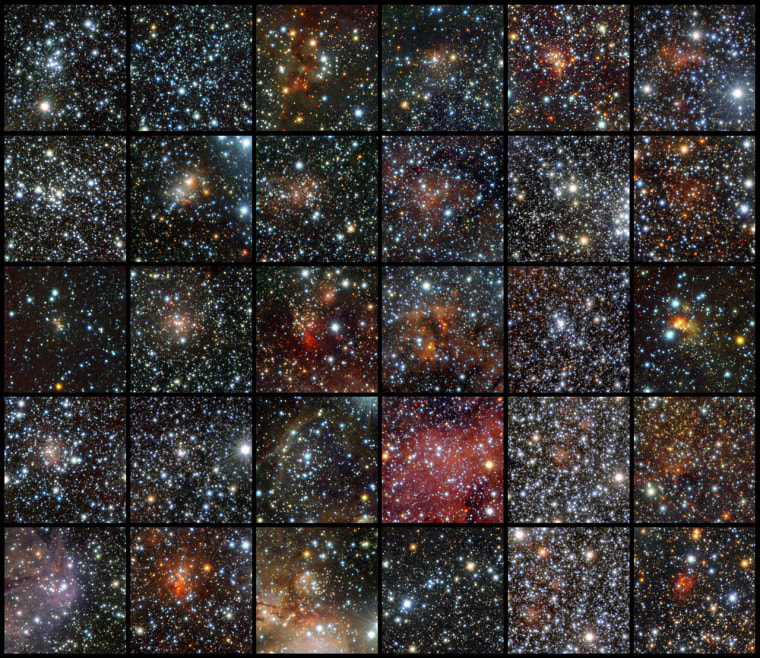If you're looking for hidden treasures, the dusty disk of our Milky Way galaxy might not be the first place you'd look. But that's exactly where the European Southern Observatory found almost a hundred glittering prizes.
These 30 pictures show just a portion of the treasure trove: 96 open star clusters hiding in the galaxy's dusty core. These stars can't be seen in the visible-light spectrum because they're shrouded within clouds of dust, but the ESO's VISTA infrared survey telescope is able to see through the dust. And that's not all: Sophisticated software was able to remove the glare of foreground stars, allowing the dimmer clusters to stand out.
Why go to all that trouble? Well, astronomers surmise that the majority of stars that are at least 50 percent bigger than our own sun are formed within these types of open clusters, and yet not that many of them have been seen — primarily due to all that pesky dust. Getting a better read on the distribution and composition of open clusters will provide new pieces to the puzzle of our galaxy's formation.
"We found that most of the clusters are very small and only have about 10 to 20 stars. Compared to typical open clusters, these are very faint and compact objects — the dust in front of these clusters makes them appear 10,000 to 100 million times fainter in visible light. It’s no wonder they were hidden," Radostin Kurtev, a member of the team making the observations, said in today's image advisory from the ESO.
The team's findings are to be published in the journal Astronomy & Astrophysics. But these discoveries may well be merely a first taste of the treasure. "We’ve just started to use more sophisticated automatic software to search for less concentrated and older clusters," said Jura Borissova, the lead author of the study. "I am confident that many more are coming soon."
Connect with the Cosmic Log community by "liking" the log's Facebook page or following @b0yle on Twitter. You can also add me to your Google+ circle, and check out "The Case for Pluto," my book about the controversial dwarf planet and the search for new worlds.
